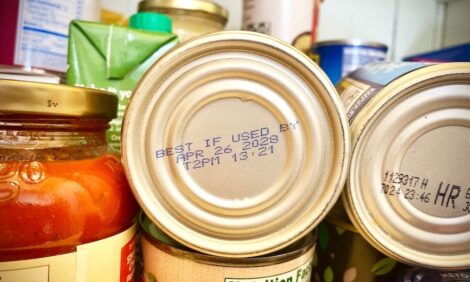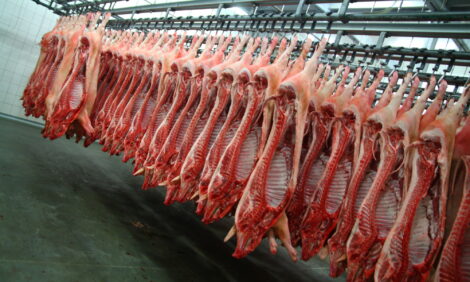



Should nitrogen fertilizer be applied after injected swine manure?
By Brad Van De Woestyne, and Alfred M. Blackmer, professor, Department of Agronomy, Iowa State University - Many farmers question the nitrogen (N)-supplying power of animal manure and apply fertilizer N as insurance against yield losses. Precision farming trials in 2001 add new support for the conclusion that it is not profitable to apply such insurance N when liquid swine manure is injected into soil.

Integrated Crop Management
is published by the Department of Entomology, Iowa State University, Ames, Iowa. |
The studies were made possible by funding from the Iowa Corn Promotion Board,
the Iowa Soybean Promotion Board, and the Integrated Farm and Livestock
Demonstration Program through the Iowa Department of Agriculture and Land
Stewardship.
Trials were conducted on fields where the manure was applied in
accordance with the normal practice of the producer (Table 1). The manure was
either knifed into the soil or applied to the surface and immediately covered by
disks on the applicator. Fertilizer was applied in replicated strips going the
lengths of the fields. These strips were at least two combine swaths wide. The
fields were harvested with combines having yield monitors and global positioning
system (GPS) receivers.
Table 1. Summary of precision farming trials to access N fertilizer needs
after application of liquid swine manure. |
||||
| Yield | ||||
| County | Manure N Ratea |
FN Rate |
Manure |
Manure + FN |
| ----pounds N/acre---- | ----bushels/acre---- | |||
| Floyd | 105 |
50 |
170 |
172 |
| Butlerb | 114 |
100 |
105 |
116 |
| Hancock | 136 |
50 |
154 |
165 |
| Hancock | 136 |
50 |
164 |
164 |
| Hancock | 136 |
50 |
170 |
167 |
| Hancock | 136 |
50 |
172 |
172 |
| Boone | 151 |
50 |
165 |
170 |
| Boone | 151 |
50 |
161 |
163 |
| Howard | 166 |
50 |
155 |
160 |
| Howard | 175 |
45 |
168 |
170 |
| Fayette | 180 |
50 |
170 |
181 |
| Winnesheik | 200 |
50 |
109 |
113 |
| Franklin | 200 |
80 |
157 |
165 |
| Bremer | 200 |
40 |
182 |
184 |
| Kossuth | 207 |
50 |
168 |
178 |
| Howard | 255 |
45 |
155 |
159 |
| Howardb | -- |
60 |
120 |
123 |
| Washington | -- |
50 |
209 |
212 |
| Mean | 166 | 54 |
159 |
163 |
| FN, fertilizer N. a Rate calculated from results of manure analysis. b Manure was applied in the spring; it was applied in the fall at all other sites. |
||||
It was not profitable to fertilize all sites because the average yield increase (4.2 bushels/acre) was not enough to pay for fertilizer materials and application. The cost of 50 pounds of N can be approximated at 4 bushels of corn, and the cost of application often is greater than 2 bushels of corn.
 Modern manure applicators incorporate liquid swine manure into soils.
|
Application of the fertilizer N was profitable at normal prices for grain and fertilizer at only four of the 18 sites. It is noteworthy, however, that this profit could be captured only if the responsive sites could be identified before fertilization.
The yield responses were slightly larger than those observed in a similar study in 2000 (see January 29, 2001, ICM article Save nitrogen dollars after manure). The difference between years probably should be attributed to greater losses of nitrate during early season rainfall in 2001 than in 2000. Pooling data from both years, however, adds support to the conclusion that it is not profitable to apply fertilizer N after liquid swine manure is injected into the soil.
Application of an average of 54 pounds of N to obtain an average of 4.4 bushels/acre of grain results in very inefficient use of fertilizer N. If corn grain contains an average of 0.7 pounds N/bushel, only 5 percent of the fertilizer N was harvested. Much of the remaining N probably is present as nitrate at the end of the season, and this nitrate can move from fields to water supplies between cropping seasons.
Mounting evidence suggests that injected liquid swine manure provides a much more reliable source of N for corn than does manure that is not incorporated into the soil. The effects of application method may be much greater than generally recognized because modern applicators enable more rapid incorporation of manure than was previously possible.
There is great need for more studies in fields where liquid swine manure was applied at rates less than 125 pounds N/acre. Farmers who have applied manure at such rates have combines equipped with yield monitors and GPS, and who would like to cooperate in trials during 2002 should contact Brad at (515) 294-9726.
By Brad Van De Woestyne, and Alfred M. Blackmer, professor, Department of Agronomy, Iowa State University. This information subject to a usage policy.







